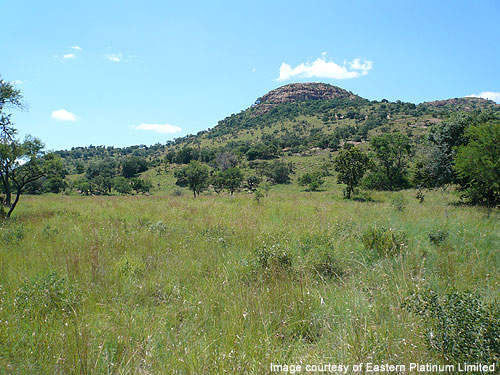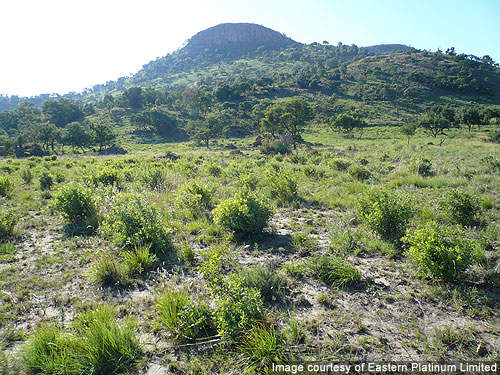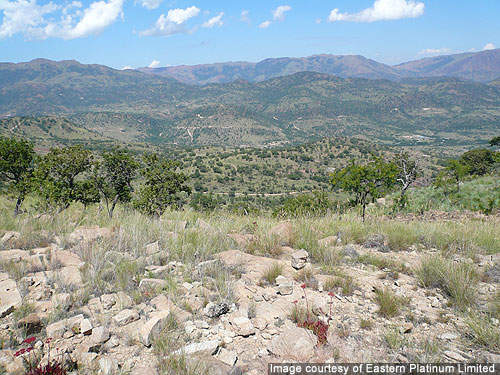The Mareesburg mine is located in South Africa in the Limpopo province, approximately 50km west of Lydenburg. The mine is spread over 2,129ha and is owned by Eastern Platinum (75.5%) in a joint venture with Lion’s Head Platinum (LHP). The project will be developed at a cost of $227m.
A feasibility study for the project was completed at the end of 2009. An order mining right for the project was granted by the Canadian Department of Mineral Resources in November 2010.
The Mareesburg mine will produce 115,000 6E PGM ounces annually. Development of the mine is expected to increase the annual production of Eastern Platinum to 325,000tpa.
Reserves
The mine contains an estimated 4.5mt of probable reserves graded at 4g/t 4E. In the measured and indicated category, the mine holds 8.9mt graded at 5.26g/t 4E and 6.9mt graded at 2.19g/t 4E.
Geology
The deposit lies within the Bushveld Complex (BC), the largest repository of vanadiferous titano-magnetite, chromite and platinum group metals in the world. The BC occurs in three different limbs or lobes, known as the western, eastern and northern limb. The Marresburg deposit forms the southern part of the eastern limb of the Bushveld Complex.
Rocks hosted in the eastern limbs have a stratigraphic thickness of over 10km and form a saucer-shaped ellipse that extends 370km east-west and 200km north-south. An associated suite of Bushveld granitoid rocks occupies the central area of the saucer.
A large laterally continuous layer of mafic rocks known as the Rustenburg Layered Suite (RLS) forms a simple lithostratigraphic sub-unit of the BC.
Based on distinctive cumulate mineralogy, the RLS is segmented into five zones: marginal zone, lower zone, critical zone, main zone and the upper zone. PGM-enriched and chromite layers in the complex are found in the critical zone within the Merensky Reef, the UG2 Chromitite layer and the Platreef.
The three horizons account for over 85% of the world’s PGM resources and 65% of world production. Magmatic layers of the Merensky and UG2 horizons are visible for several kilometres along strike and down dip.
The Mareesburg deposit is a down-warp of the Merensky and UG2 reefs and occurs as a detached outlier from the main outcrops of the west dipping reefs, immediately east of the Der Brochen–Booysendal Project of Angloplats. The deposit consists of the Mareesburg 8 JT farm, which is overlain by dipping rocks of the upper and lower critical zone. The farm is characterised by good outcropping. A significant east-west trending fault bisects the farm about 600m to the north of the main UG2 outcrop.
At the western outcrop edge, a minor south-west striking fault offsets the UG2. A third fault with a 10m vertical displacement extends north-south through the eastern part of the deposit. It follows the trace of a partial vertical up to a 5m-thick diabase dyke that is found in the eastern and western areas of the deposit along with a few narrow dyke fingers.
Much of the farm overlies significant chromitite layers, including the LG6, the MG1 to MG4 layers, and the UG1, a mineralised chromite layer of the UG2 sequence.
Based on the chromite content and the inter-layer distance, the UG2 sequence is divided into three mineralised chromite layers. The lowermost layer, UG2, is the main chromitite layer which is directly overlain by the well-defined UG2A, followed by the less developed UG2B.
Because the UG2A overlies the UG2, a much thicker chromitite layer (a composite reef) is formed with no pyroxenite parting developed. The composite UG2 splits at the centre of the basin into an upper UG2A and the actual lower UG2.
The UG2 chromitite horizon outcrops around the bottom of a prominent hill on the farm. The UG2 chromitite horizon and the Merensky Reef are hosted in a down-warp-shaped local structure in the critical zone.
Mining
Mareesburg will be an open pit mine. A concentrator built approximately 30km away from the mine will process the mined reef material by using standard concentrating processes. The concentrator will operate at a feed rate of 90,000tpm.
Recoveries are estimated to be in the region of 80%. A production ramp up from the mine will be rapid to allow the mill to run at peak capacity from commissioning.






